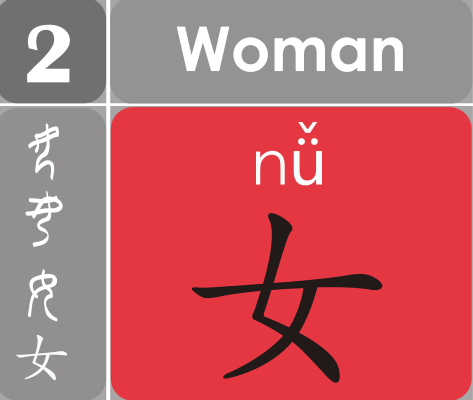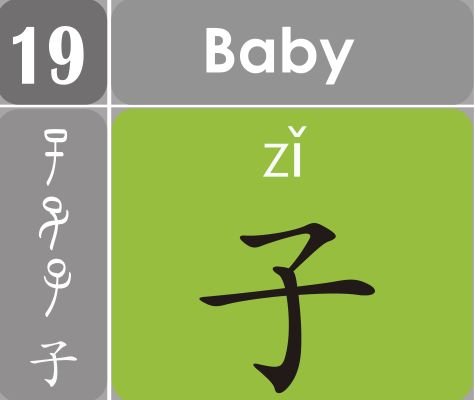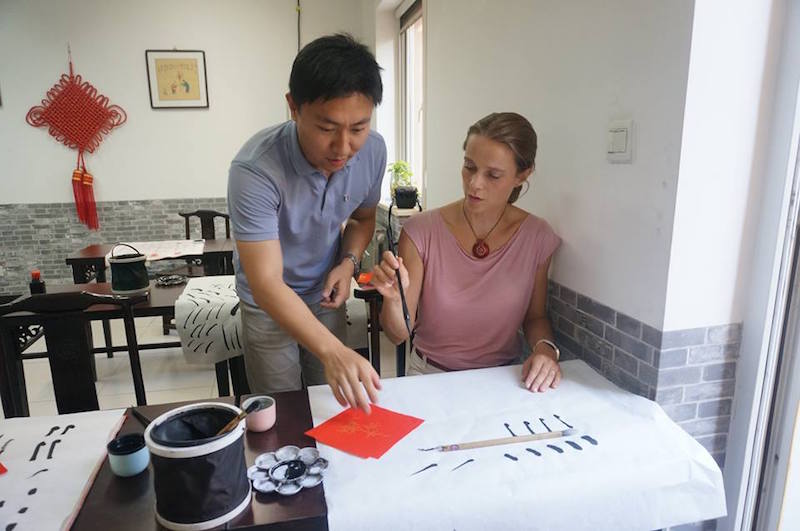Hao Laoshi: BICC Instructor Paints a Vivid, Informative Picture
As part of the Beijinger’s Mandarin Month series ahead of our June 25 Mandarin Mixer, we present Hao Laoshi, a series of Q&As with teachers and students at Mandarin learning centers across town. Today we talk with Leo Fu, an instructor at Beijing International Chinese College (BICC).
What are some examples of the pictograms you use to teach students in an interesting way?
In my class, I tell my students that Chinese characters are not difficult to learn. Learning characters is just like doing the alchemy. You put different element character together and see what will come out of it.
Below is an example. This is an element character. It means woman, from the Oracle Bone Script (top left). It is an image of a woman kneeling down.

And this is also an element character and means son.
Look at the Oracle Bone Inscription, it is a new born baby wrapped up by a cloth. We can put 女 and 子together to create a new character, 好 indicating a mother and her son. It means beautiful.
We can also take a look at the character for horse (马, mǎ). Again, you can think of it like alchemy: 女+马= 妈. Can you guess what it means? It means mother (妈, mā). It’s derived from the fact that the horse (马, mǎ) was the biggest domesticated animal in Chinese history. So Chinese people used 马 (mǎ) to express that mother is the biggest woman in family – literally.
There are more than 3,000 meaning compound characters in the Chinese character systems. So our students learn to combine and easily figure out the meanings.
Tell us about a student who struggled in your class, and what you did to help him or her succeed?
In the beginning, students have a big question mark in their heads – they can not believe that learning characters can be a easy job. But after my explanation and our discussion, they find there is a very clear reason and logic behind every single character. Figuring out the meaning of a character is like a game. My students really love it.
One of my students, an American named Michael, likes this way of learning character so much. But during the first class, he told me that he was scared of learning characters, because they seemed like forms that were impossible to understand. But after I invited him to participate in the discussion of characters creation, he found characters to be a reasonable and combination of different elements. He realized they are not random, but logical. Now he is one of my best character learners. We call him the Characters Guru.
Can you tell us a funny story about a hilarious mistake that one of your students made in class?
Yes, I got a bunch of funny stories about a hilarious mistakes our students made. But these mistakes, I would rather call them “insights” to understanding of characters, because they are reflection of how students look at these words.
For instance, the character for deaf (聋, lóng) is a meaning-meaning compound character created by 龙 (a pictogram that originally meant boa constrictor, but now means dragon) and 耳 (a pictogram that means ear). When I present this character to my students, they argued that this character means the horns on a dragon’s head. But I gave them a hint that dragon is an imaginative animal which doesn’t exist, and in ancient China, 龙 just means boa, the very huge snake. No sooner did I finish my explanation, than my students shouted: “We got it, we got it, it means deaf since snake has no ears!” And they are correct. It means deaf. You see, the logic universally understood.
From this instance, I began to realize that characters are a reflection of the ancient life of Chinese people. It is also a good sample of universal understanding toward the world. It is not alien to international students.
How do you handle lazy or naughty students?
I will let them write the characters of the animals we learned in my class, and then they will have to imitate those animals. If they play as a sheep (羊, yáng), then they need to imitate the bleating and act like a sheep. And I will whip them (kidding, of course).
BICC is one of the many schools participating in our June 25 Mandarin Mixer at Home Plate BBQ. Come meet some BICC teachers and reps from a dozen other schools at our free event. Pre-registration is required, click here to do so, so that you can take advantage of free booze and other goodies.
In the meantime, be sure to follow our month-long Mandarin Month coverage here.
Mandarin Month is brought to you by Pleco, Project Pengyou, and Ninchanese.
Photo courtesy of BICC


